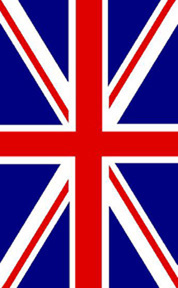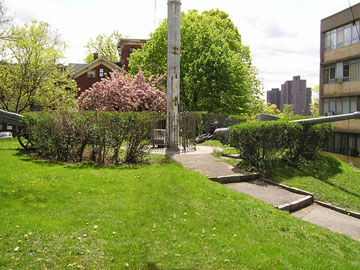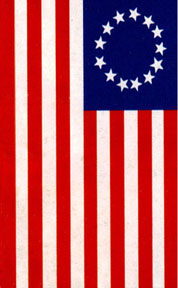Fort Number 8
When the Revolutionary War began New York City had a population of 25,000 people mostly living at the tip of Manhattan (Brick 39). The city’s only connection to the mainland was the Old Post Road which ran north up the length of the island and crossed the Harlem River at King’s Bridge (now Kingsbridge) where it divided into roads toward either Albany or Boston. The Second Continental Congress realized New York’s vulnerability and in 1775 passed a resolution to erect a fort along the Harlem River to protect the bridge. Subsequently the Americans erected Fort Washington, a large fortification on the Manhattan side of the Harlem River, across from the BCC campus (Brick 40).
In October of 1776, British and Hessian forces landed on the shores of the eastern Bronx and marched across the borough in preparation for an assault on Fort Washington. The British, noting its strategic location vis-a-vis the river and Fort Washington, seized the site of what is now BCC’s campus and erected Fort Number 8-their eighth fort lining the Harlem River (The Bronx County Historical Society 1) .
Fort Number 8 was an “earthworks” structure that was 200 square feet and was armed with heavy artillery (Brick 41). From this fort the British launched their attack on Fort Washington in November of 1776.
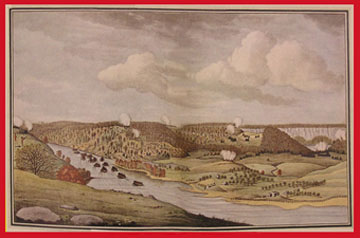 |
| Captain Davies' 1776 Sketch |
Fort Number 8’s artillery blasted Fort Washington and provided cover to 30 boats that ferried British and Hessian soldiers across the Harlem River (Brick 41). A Captain Thomas Davies of the Royal Artillery, who was stationed at Fort Number 8, drew a sketch of the battle allowing a glimpse of the campus area in 1776 (Jones 426).
On November 16, 1776, Fort Washington and its 2,637 soldiers surrendered to the British. With this victory the British possessed Manhattan which they held for the rest of the war. Fort Number 8 remained under British control until October 20, 1782 when the British destroyed it as they left New York to concentrate their efforts on the fighting in the southern part of the colonies (The Bronx County Historical Society 2). When the Schwab family owned the site in the 1860’s they found many artifacts and erected a stone memorial that still serves today as a commemoration of the site’s historic significance. Later archeological exploration unearthed cannonballs, bayonets, powder horns, regimental buttons and coins including one that was stamped Hibernia 1749 (NYU Notebook 1).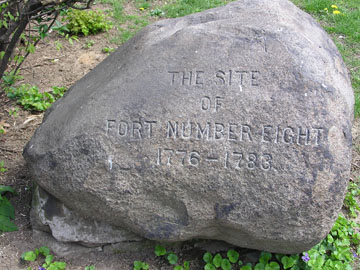
| |
|
Boulder marks the spot of Fort Number 8 on the knoll in front of Carl Polowczyk Hall.
|
Works Cited
Brick, Richard M. "Fort Number Eight And The American War For Independence." Historian (1965): 39-43.
Jones, Theodore Francis. New York University 1832 : 1932. New York: The New York University Press, 1933.
NYU Notebook. The Heights in the Revolution. New York: NYU, 1959.
The Bronx County Historical Society. The Campus on the Heights. Bronx, 1992.
Photo Credits
 Jones, Theodore Francis. New York University 1832 : 1932. New York: The New York University Press, 1933. Jones, Theodore Francis. New York University 1832 : 1932. New York: The New York University Press, 1933.
|

